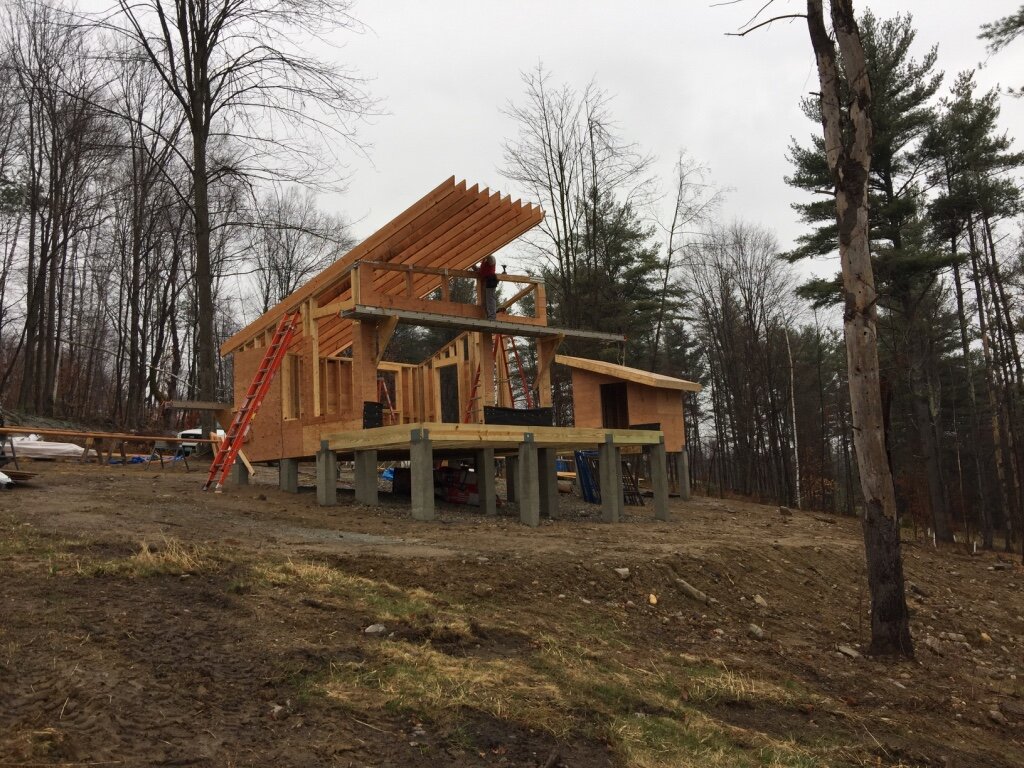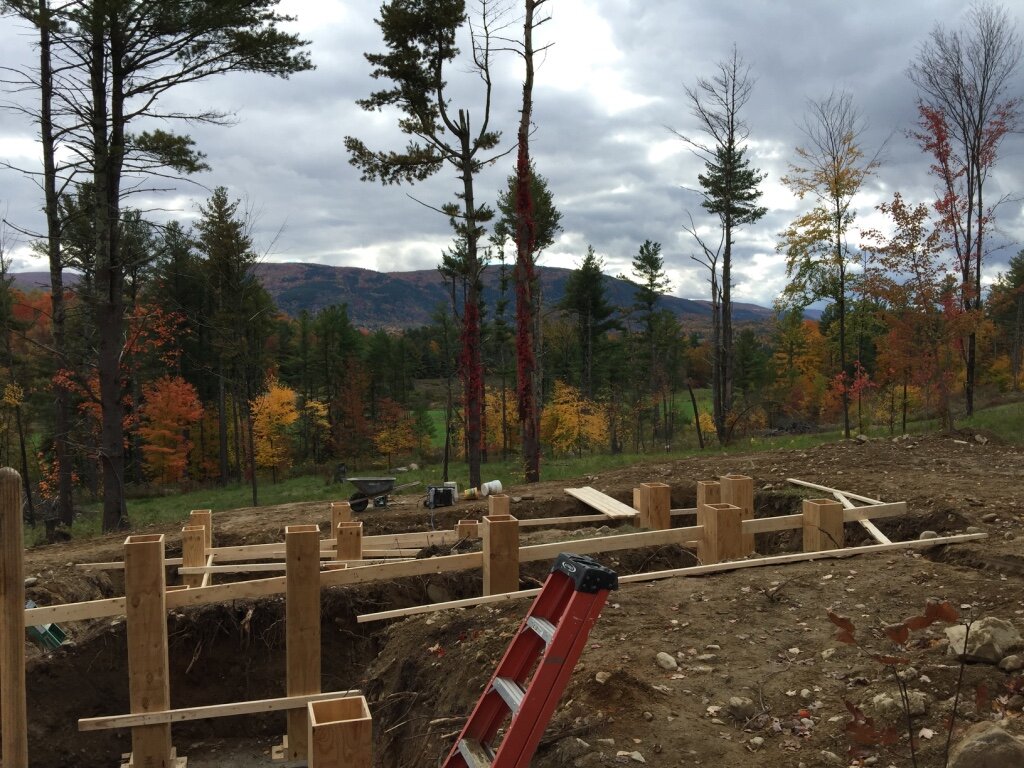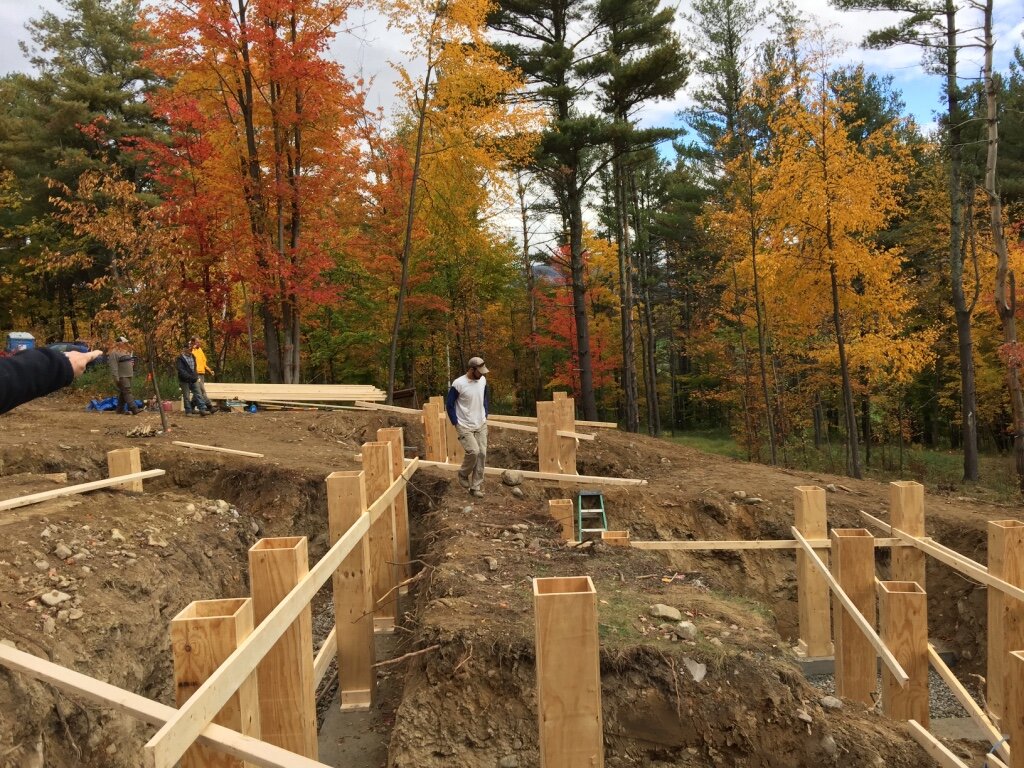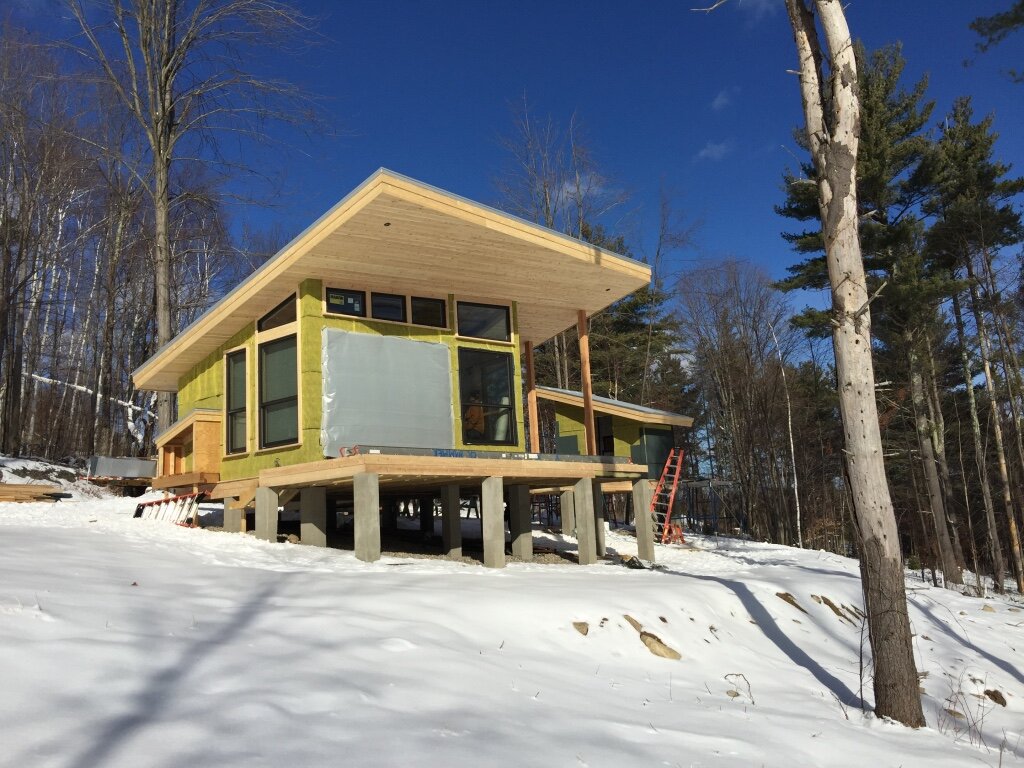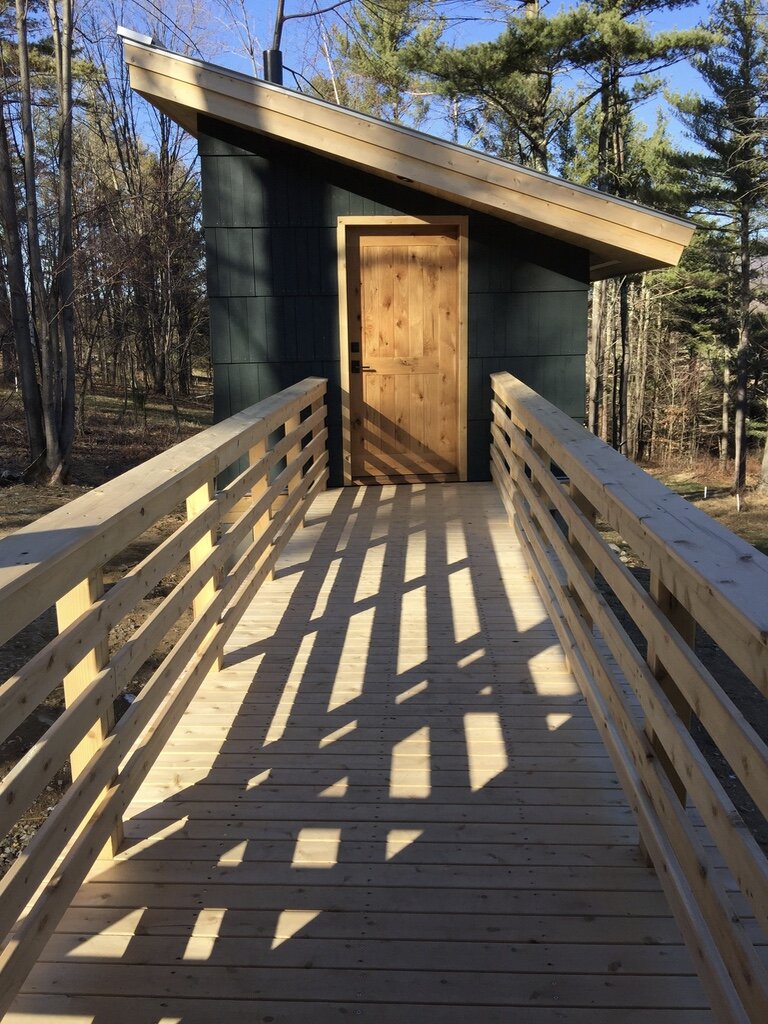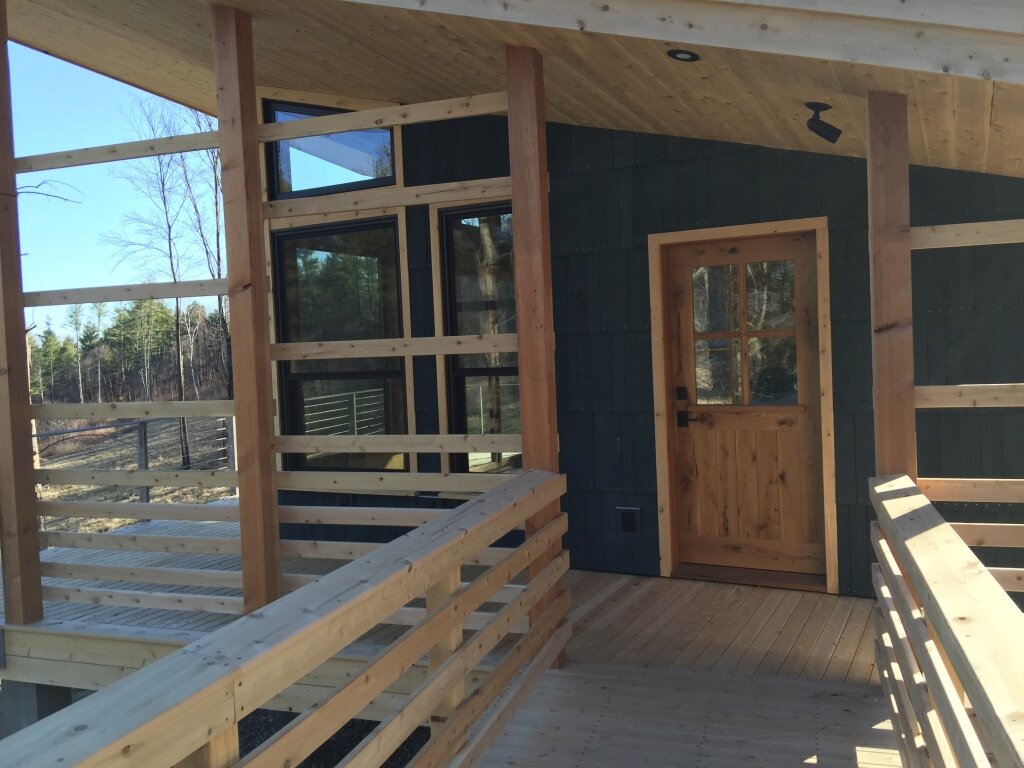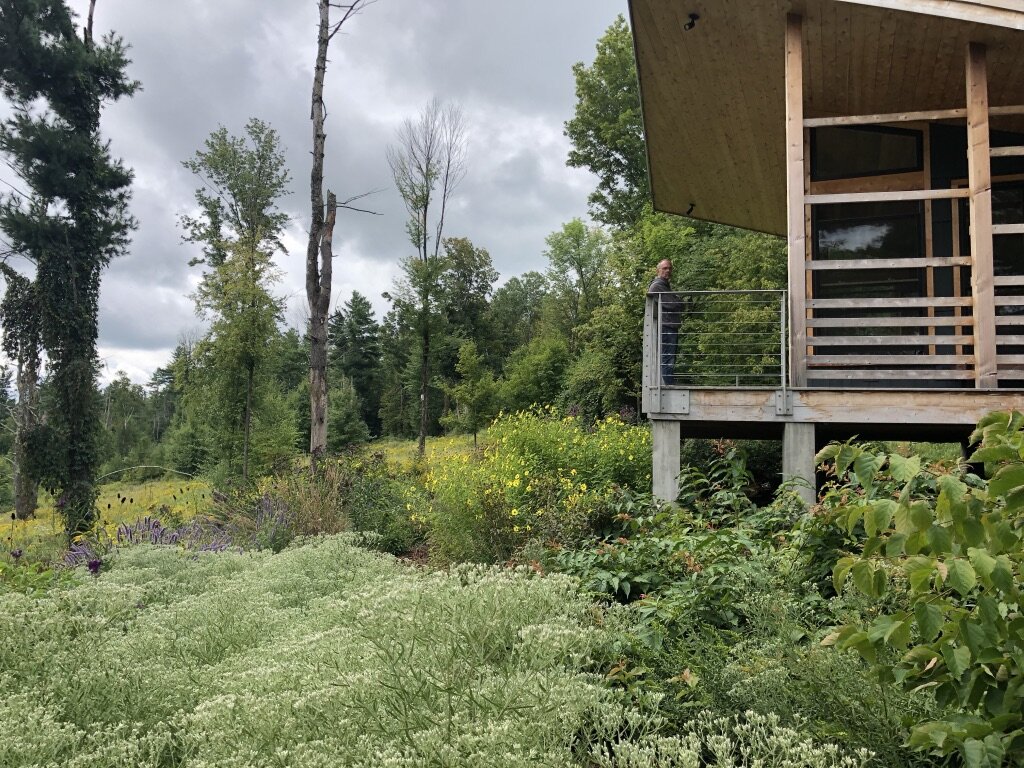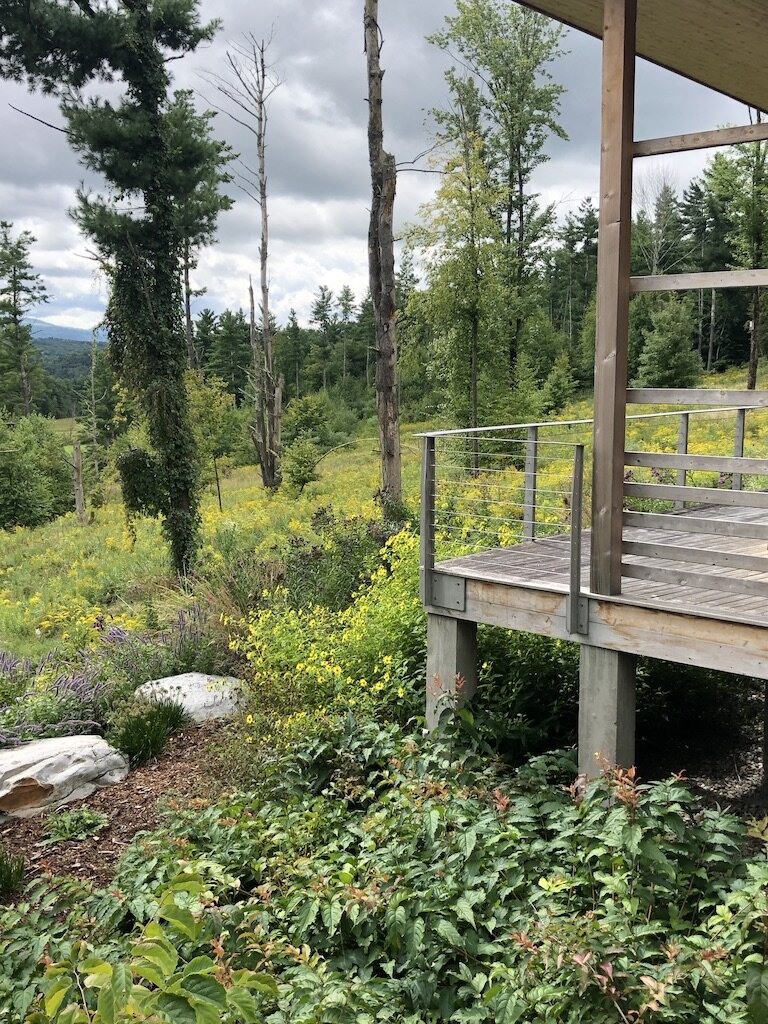
Vermont
Lean-To
A big wind came up the ridge at the far end of a property that I’d been working on for many years. It knocked down a plantation of white pine, opening a clearing of several acres. Once the dust settled, as downed trees were cleared and acceptance set in, opportunity knocked.
About 225 yards from this spot was the family compound, a pair of buildings that housed our clients and friends, Maggie and Ron, and their multi-generational extended family.
I’d been working with them for several years on the landscaping and grounds around the main house and when shown this blow-down area, I was immediately drawn to it.
Everyone in this family enjoys being together, but occasionally it’s nice to get away from the hubbub, this new clearing offered that potential within walking distance.
I suggested building a screened-in shelter to take in the new view and have a window to nature and the natural succession that would ensue.
The idea caught on and it wasn’t long before the idea morphed into a more permanent building.
My husband, David, (an architect) was employed to design a small cabin. A collaborative effort began with Ron staking out the location and David and I designing a structure and landscape simultaneously.
The cabin was set on piers and sits high above the ground. A fair amount of soil and fill was needed to ease the transition between the cabin and the newly transformed topography.
Stones unearthed during excavation were put to use retaining the new slopes on the open southeast side and native perennials (Pycnanthemum muticum, Monarda fistulosa, Veronicastrum virginicum, and Asclepeis tuberosa among others), were planted in large groups to blend with the existing meadow to eventually knit together.
On the wooded northwest side, we covered the ground with native ferns, Pulmonaria rubra, Aquilegia canadensis, Asarum canadensis and other woodland natives.
Birch, Hemlock, Fir, Amelanchier, Carpinus and other native tree species were planted to help close in the woods.
Several white pine snags were deliberately left standing in the view, both for wildlife, and to inform the sense of place. Brush piles were left in the open fields and the family established apiaries to take advantage of the wide swaths of goldenrod that naturally emerged.
The field of goldenrod attracts lightening bugs and on a warm summer night the meadow is a racket of crickets and flickering illumination. This is a favorite time to hang out.
The rustic retreat has come in handy as a guest house, a picnic spot and a get-away. It has also been a favorite spot for some of that hubbub, with cocktails and hors d’oeuvres.
As expected and observed…nature is taking its course, and every season brings change.
If you’re intrigued about the cabin, you can read more about it here.




